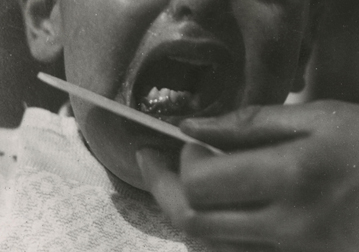|
Tuberculosis of the Skin
Tuberculosis of the skin is an uncommon form of extra-pulmonary tuberculosis. Of the numerous types of cutaneous tuberculosis each varies in its cause, appearance, degree of severity and level of discomfort.
Erythema nodosum is an inflammatory condition affecting subcutaneous fat cells and exhibits as a rash or series of red nodules on the lower legs, although progression to the thighs or arms is not uncommon. It is a non-specific condition often indicative of systemic disease. In the tuberculosis manifestation it is considered to be a hypersensitivity to tuberculo-protein, often presenting in children with primary tuberculosis but more commonly seen in young adults. A strong positive tuberculin skin test is usually an indication of underlying tuberculosis in erythema nodosum. This condition does not progress to ulceration; rarely leaves scarring and tends to disappear without any treatment, although treatment of the underlying cause is required.
Tuberculosis can also manifest itself within the lymphatic system and which can have a direct effect on the overlying skin. Scrofula, also known as mycobacterial cervical lymphadenitis, is one of the more visible manifestations of tuberculosis demonstrating as a series of bluish-purple lumps or sores on the neck, known as cold abscesses, which are caused by infection in the cervical lymph nodes. As the lesions progress the skin becomes stuck to the sores ultimately creating a sinus or open wound if left untreated. Similarly, scrofuloderma is caused by direct extension of the tuberculosis infection from underlying structures to the overlying skin elsewhere on the body, such as lymph nodes or from bones and joints.
The most common and most persistent form of skin tuberculosis is lupus vulgaris. It is a condition that presents in patients who have been re-infected or are considered to be post-primary, hence a progressive form of skin disease. It presents as reddish-brown gelatinous nodules on the face, particularly the eyelids, nose, cheeks and ears, and neck. If left untreated it can lead to severe ulceration and disfigurement; scarring is common with this form of skin tuberculosis.
|
|

Click Image to Enlarge
|